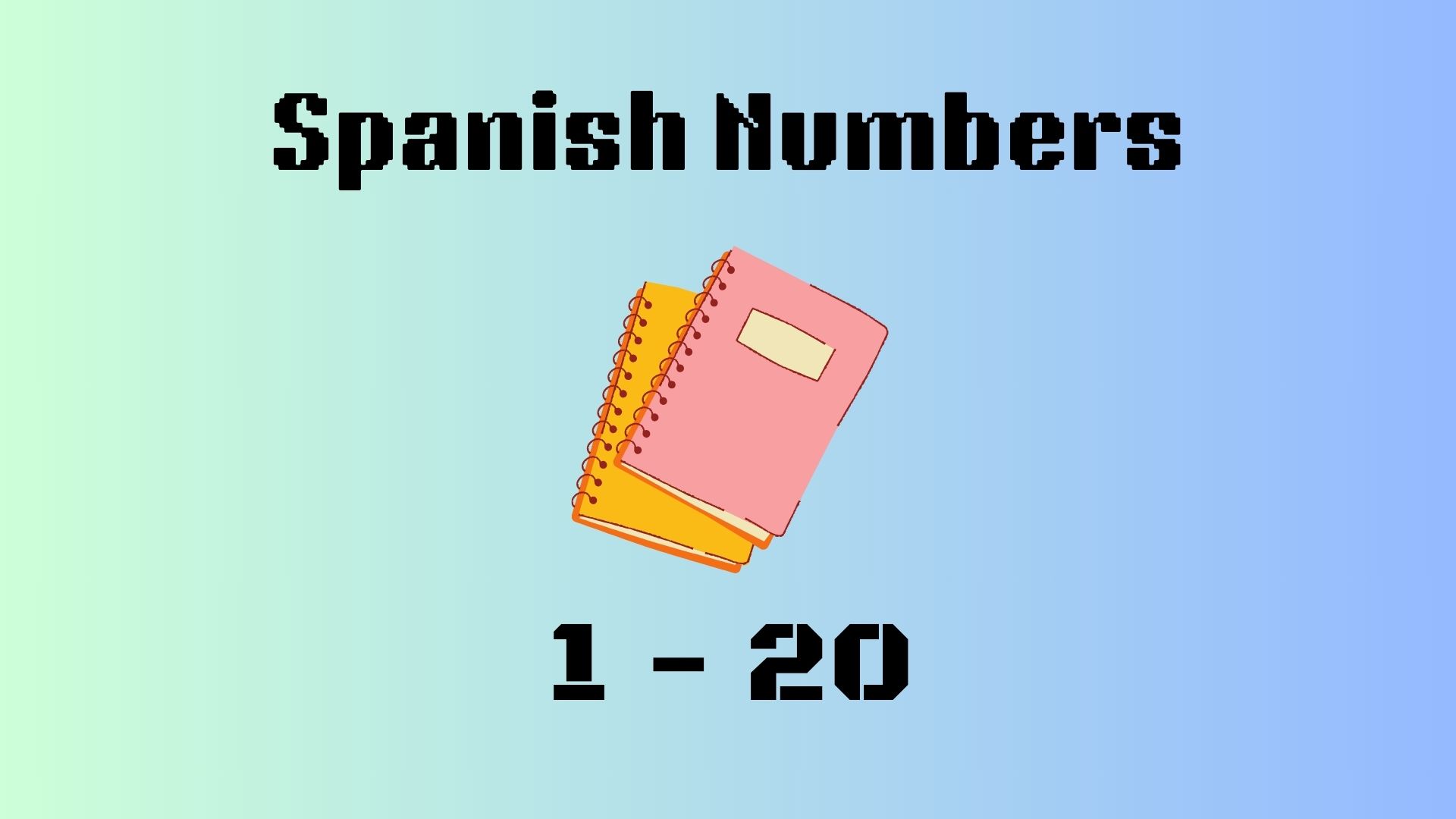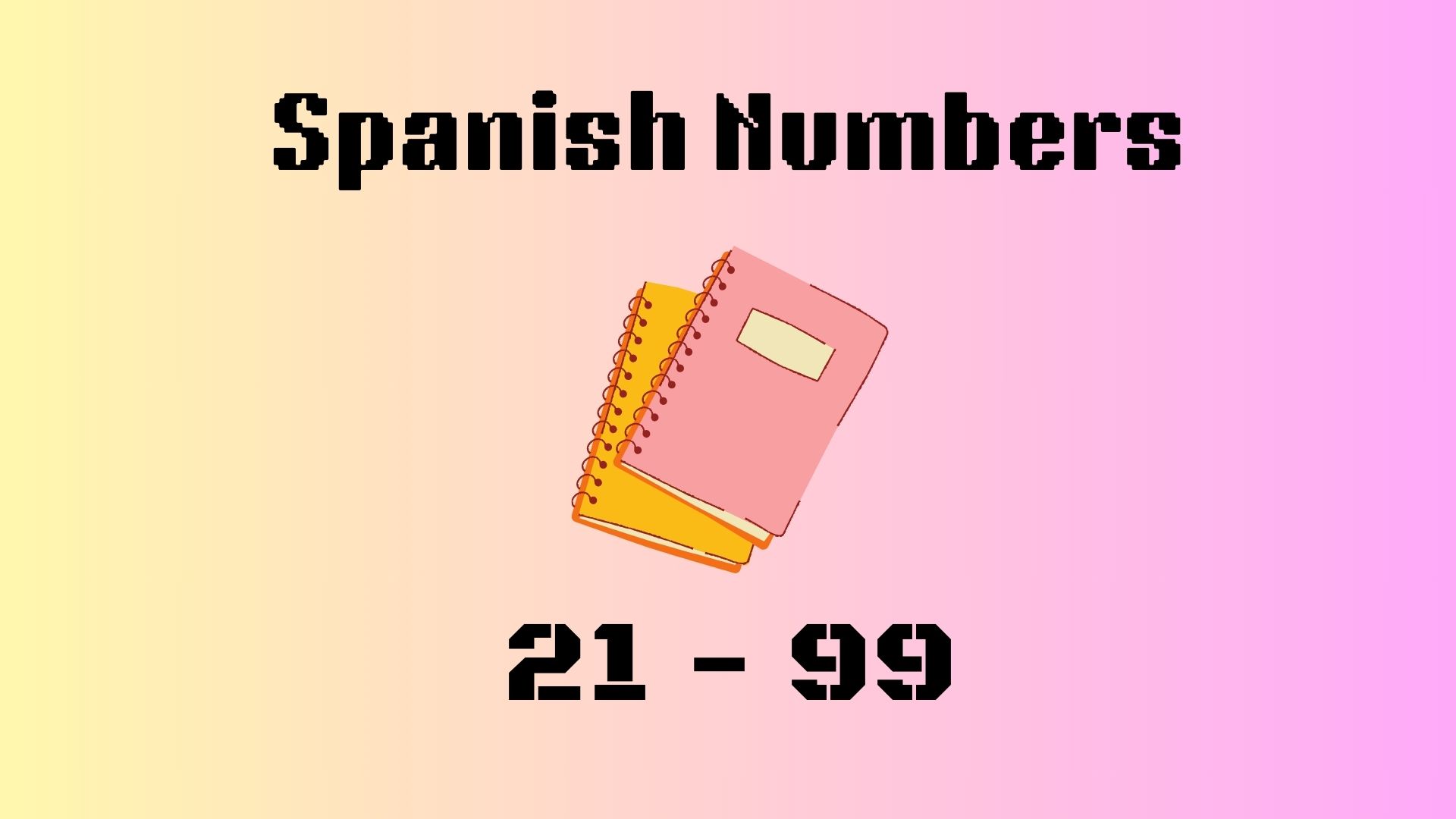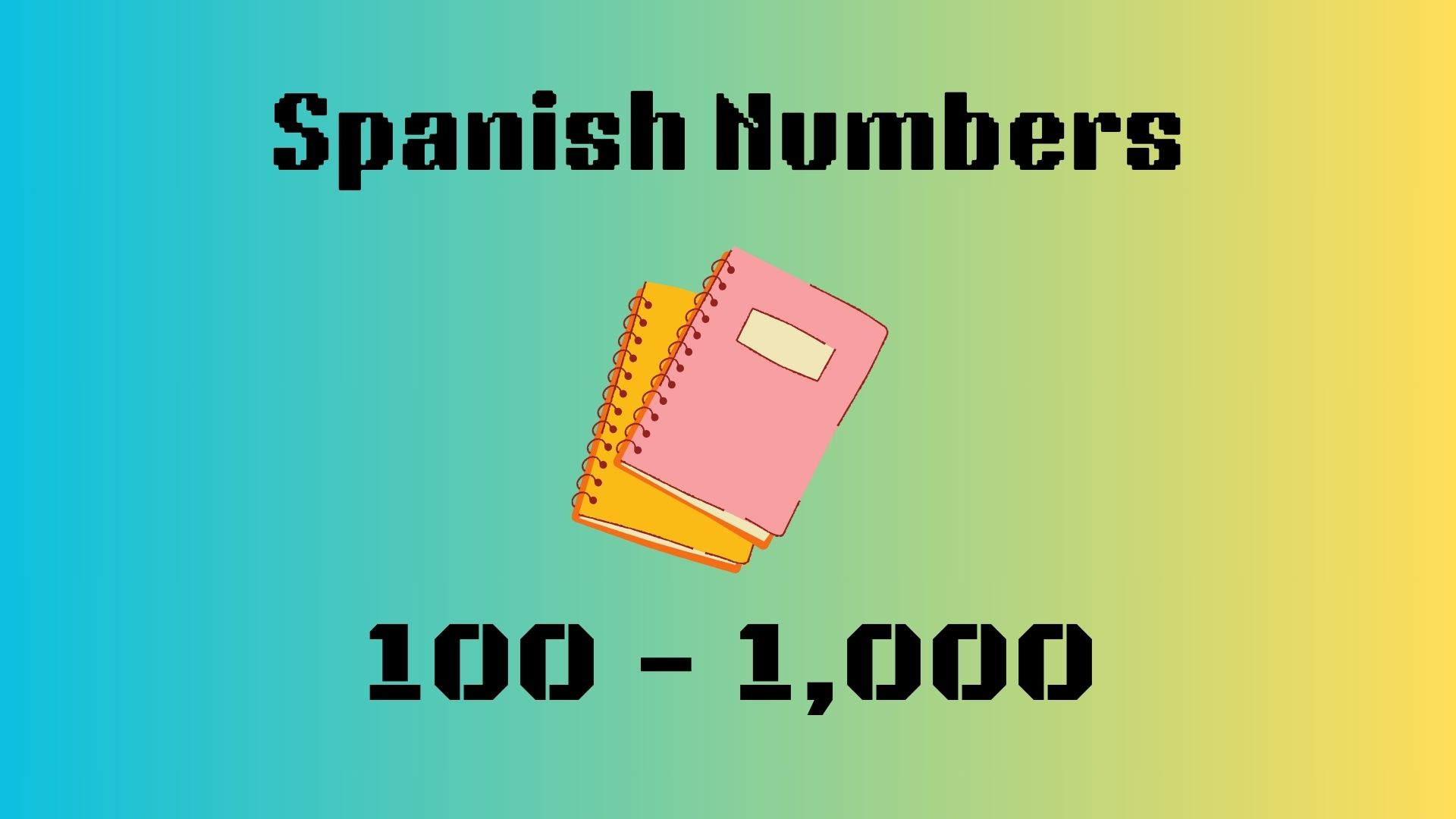Learning Spanish numbers from 1 to 1000 isn’t just about remembering them. It’s about giving yourself tools that help in everyday situations like shopping, eating out, making deals, and planning events. The basic numbers start simple and then build up to more complex patterns. These patterns show how logical the Spanish language is. This guide doesn’t just explain these numbers; it also shows you how to use them in real life. This makes it easier to understand and interact in Spanish. Now, let’s see how all this helps in actual conversations.
How to Count from 1 – 1000 in Spanish
Spanish Numbers From 1 – 20

| Number | Spanish | Pronunciation |
| 1 | uno | OO-no |
| 2 | dos | dose |
| 3 | tres | trays |
| 4 | cuatro | KWAH-tro |
| 5 | cinco | SEEN-ko |
| 6 | seis | says |
| 7 | siete | SYE-te |
| 8 | ocho | OH-cho |
| 9 | nueve | NWAY-vay |
| 10 | diez | dyess |
| 11 | once | OWN-say |
| 12 | doce | DOH-say |
| 13 | trece | TRAY-say |
| 14 | catorce | kah-TOR-say |
| 15 | quince | KEEN-say |
| 16 | dieciséis | dyess-EE-says |
| 17 | diecisiete | dyess-ee-SYAY-te |
| 18 | dieciocho | dyess-ee-OH-cho |
| 19 | diecinueve | dyess-ee-NWAY-vay |
| 20 | veinte | VAYN-tay |
Learning Spanish numbers from 1 to 20 is key for basic math and everyday chats. Start with the simple ones: ‘uno’ (1), ‘dos’ (2), and ‘tres’ (3). Then you have ‘cuatro’ (4), ‘cinco’ (5), and ‘seis’ (6). Next up are ‘siete’ (7), ‘ocho’ (8), ‘nueve’ (9), and ‘diez’ (10). That’s your first ten.
Now, for the teens. It kicks off with ‘once’ (11) and goes on with ‘doce’ (12), ‘trece’ (13), ‘catorce’ (14), and ‘quince’ (15). We wrap up with ‘dieciséis’ (16), ‘diecisiete’ (17), ‘dieciocho’ (18), ‘diecinueve’ (19), and finally ‘veinte’ (20). These numbers are everywhere, from the market to planning your day.
Spanish Numbers From 21 – 99

| Number | Spanish Number Spelling | Spanish Number Pronunciation |
| 21 | Veintiuno | bey-n-tee-oo-no |
| 22 | Veintidós | bey-n-tee-dohs |
| 23 | Veintitrés | bey-n-tee-trehs |
| 24 | Veinticuatro | bey-n-tee-koo-ah-troh |
| 25 | Veinticinco | bey-n-tee-seen-coh |
| 26 | Veintiséis | bey-n-tee-say-s |
| 27 | Veintisiete | bey-n-tee-see-eh-teh |
| 28 | Veintiocho | bey-n-tee-oh-choh |
| 29 | Veintinueve | bey-n-tee-noo-eh-veh |
| 30 | Treinta | trey-n-tah |
| 31 | Treinta y uno | trey-n-tah-ee-oo-no |
| 32 | Treinta y dos | trey-n-tah-ee-dohs |
| 33 | Treinta y tres | trey-n-tah-ee-trehs |
| 34 | Treinta y cuatro | trey-n-tah-ee-koo-ah-troh |
| 35 | Treinta y cinco | trey-n-tah-ee-seen-coh |
| 36 | Treinta y seis | trey-n-tah-ee-say-s |
| 37 | Treinta y siete | trey-n-tah-ee-see-eh-teh |
| 38 | Treinta y ocho | trey-n-tah-ee-oh-choh |
| 39 | Treinta y nueve | trey-n-tah-ee-noo-eh-veh |
| 40 | Cuarenta | koo-ah-reh-n-tah |
| 41 | Cuarenta y uno | koo-ah-reh-n-tah-ee-oo-no |
| 42 | Cuarenta y dos | koo-ah-reh-n-tah-ee-dohs |
| 43 | Cuarenta y tres | koo-ah-reh-n-tah-ee-trehs |
| 44 | Cuarenta y cuatro | koo-ah-reh-n-tah-ee-koo-ah-troh |
| 45 | Cuarenta y cinco | koo-ah-reh-n-tah-ee-seen-coh |
| 46 | Cuarenta y seis | koo-ah-reh-n-tah-ee-say-s |
| 47 | Cuarenta y siete | koo-ah-reh-n-tah-ee-see-eh-teh |
| 48 | Cuarenta y ocho | koo-ah-reh-n-tah-ee-oh-choh |
| 49 | Cuarenta y nueve | koo-ah-reh-n-tah-ee-noo-eh-veh |
| 50 | Cincuenta | seen-koo-en-tah |
| 51 | Cincuenta y uno | seen-koo-en-tah-ee-oo-no |
| 52 | Cincuenta y dos | seen-koo-en-tah-ee-dohs |
| 53 | Cincuenta y tres | seen-koo-en-tah-ee-trehs |
| 54 | Cincuenta y cuatro | seen-koo-en-tah-ee-koo-ah-troh |
| 55 | Cincuenta y cinco | seen-koo-en-tah-ee-seen-coh |
| 56 | Cincuenta y seis | seen-koo-en-tah-ee-say-s |
| 57 | Cincuenta y siete | seen-koo-en-tah-ee-see-eh-teh |
| 58 | Cincuenta y ocho | seen-koo-en-tah-ee-oh-choh |
| 59 | Cincuenta y nueve | seen-koo-en-tah-ee-noo-eh-veh |
| 60 | Sesenta | seh-sehn-tah- |
| 61 | Sesenta y uno | seh-sehn-tah-ee-oo-no |
| 62 | Sesenta y dos | seh-sehn-tah-ee-dohs |
| 63 | Sesenta y tres | seh-sehn-tah-ee-trehs |
| 64 | Sesenta y cuatro | seh-sehn-tah-ee-koo-ah-troh |
| 65 | Sesenta y cinco | seh-sehn-tah-ee-seen-coh |
| 66 | Sesenta y seis | seh-sehn-tah-ee-say-s |
| 67 | Sesenta y siete | seh-sehn-tah-ee-see-eh-teh |
| 68 | Sesenta y ocho | seh-sehn-tah-ee-oh-choh |
| 69 | Sesenta y nueve | seh-sehn-tah-ee-noo-eh-veh |
| 70 | Setenta | seh-tehn-tah |
| 71 | Setenta y uno | seh-tehn-tah-ee-oo-no |
| 72 | Setenta y dos | seh-tehn-tah-ee-dohs |
| 73 | Setenta y tres | seh-tehn-tah-ee-trehs |
| 74 | Setenta y cuatro | seh-tehn-tah-ee-koo-ah-troh |
| 75 | Setenta y cinco | seh-tehn-tah-ee-seen-coh |
| 76 | Setenta y seis | seh-tehn-tah-ee-say-s |
| 77 | Setenta y siete | seh-tehn-tah-ee-see-eh-teh |
| 78 | Setenta y ocho | seh-tehn-tah-ee-oh-choh |
| 79 | Setenta y nueve | seh-tehn-tah-ee-noo-eh-veh |
| 80 | Ochenta | oh-chen-tah |
| 81 | Ochenta y uno | oh-chen-tah-ee-oo-no |
| 82 | Ochenta y dos | oh-chen-tah-ee-dohs |
| 83 | Ochenta y tres | oh-chen-tah-ee-trehs |
| 84 | Ochenta y cuatro | oh-chen-tah-ee-koo-ah-troh |
| 85 | Ochenta y cinco | oh-chen-tah-ee-seen-coh |
| 86 | Ochenta y seis | oh-chen-tah-ee-say-s |
| 87 | Ochenta y siete | oh-chen-tah-ee-see-eh-teh |
| 88 | Ochenta y ocho | oh-chen-tah-ee-oh-choh |
| 89 | Ochenta y nueve | oh-chen-tah-ee-noo-eh-veh |
| 90 | Noventa | noh-vehn-tah |
| 91 | Noventa y uno | noh-vehn-tah-ee-oo-no |
| 92 | Noventa y dos | noh-vehn-tah-ee-dohs |
| 93 | Noventa y tres | noh-vehn-tah-ee-trehs |
| 94 | Noventa y cuatro | noh-vehn-tah-ee-koo-ah-troh |
| 95 | Noventa y cinco | noh-vehn-tah-ee-seen-coh |
| 96 | Noventa y seis | noh-vehn-tah-ee-say-s |
| 97 | Noventa y siete | noh-vehn-tah-ee-see-eh-teh |
| 98 | Noventa y ocho | noh-vehn-tah-ee-oh-choh |
| 99 | Noventa y nueve | noh-vehn-tah-ee-noo-eh-veh |
Continuing from twenty-one, Spanish numbers up to ninety-nine are formed by combining the tens and the units. They are often linked with ‘y,’ which means ‘and’.
For example, twenty-one in Spanish is ‘veintiuno.’ But from thirty-one to ninety-nine, we say the tens first, then ‘y,’ and lastly the unit digit. So, thirty-one is ‘treinta y uno,’ forty-two is ‘cuarenta y dos,’ and so on.
Note that ‘veintiuno’ to ‘veintinueve’ are exceptions; they’re written as one word. From thirty on, it’s a consistent pattern, making it easier to get the hang of counting in Spanish in this range.
Spanish Numbers From 100 – 1,000

| Number | Spanish numbers spelling | Spanish number pronunciation |
| 100 | Cien | see-ehn |
| 200 | Doscientos | dohs-see-ehn-tohs |
| 300 | Trescientos | trehs-see-ehn-tohs |
| 400 | Cuatroscientos | koo-ah-troh-see-ehn-tohs |
| 500 | Quinientos | kee-nee-ehn-tohs |
| 600 | Seisientos | say-ee-see-ehn-tohs |
| 700 | Novecientos | noh-veh-see-ehn-tohs |
| 800 | Ochocientos | oh-choh-see-ehn-tohs |
| 900 | Novecientos | noh-veh-see-ehn-tohs |
| 1000 | Mil | meel |
After you’ve mastered numbers up to 99, learning Spanish numbers from 100 to 1,000 is the next step. For numbers between 100 and 199, just start with ‘ciento.’ For instance, 101 is ‘ciento uno’ and 199 is ‘ciento noventa y nueve.’
From 200 to 999, the numbers change a bit: 200 is ‘doscientos’, 300 is ‘trescientos’, and this pattern continues up to ‘novecientos’ for 900. You can combine these with the numbers from 1 to 99. So, 250 becomes ‘doscientos cincuenta’ and 743 is ‘setecientos cuarenta y tres.’ And the number 1,000? It’s simply ‘mil.’ By sticking to this structure, you’ll find it much easier to build and remember these numbers.
Conclusion
Knowing Spanish numbers from 1 to 1000 is incredibly useful. It helps you communicate effectively in everyday situations like shopping, eating out, or getting around in places where Spanish is spoken. It also builds a strong base for learning more about the language, such as grammar and new words. Plus, being good at numbers makes you more confident when talking to native Spanish speakers, improving both your social and professional life. Keep visiting the Translation Blog for more translation articles like this.

